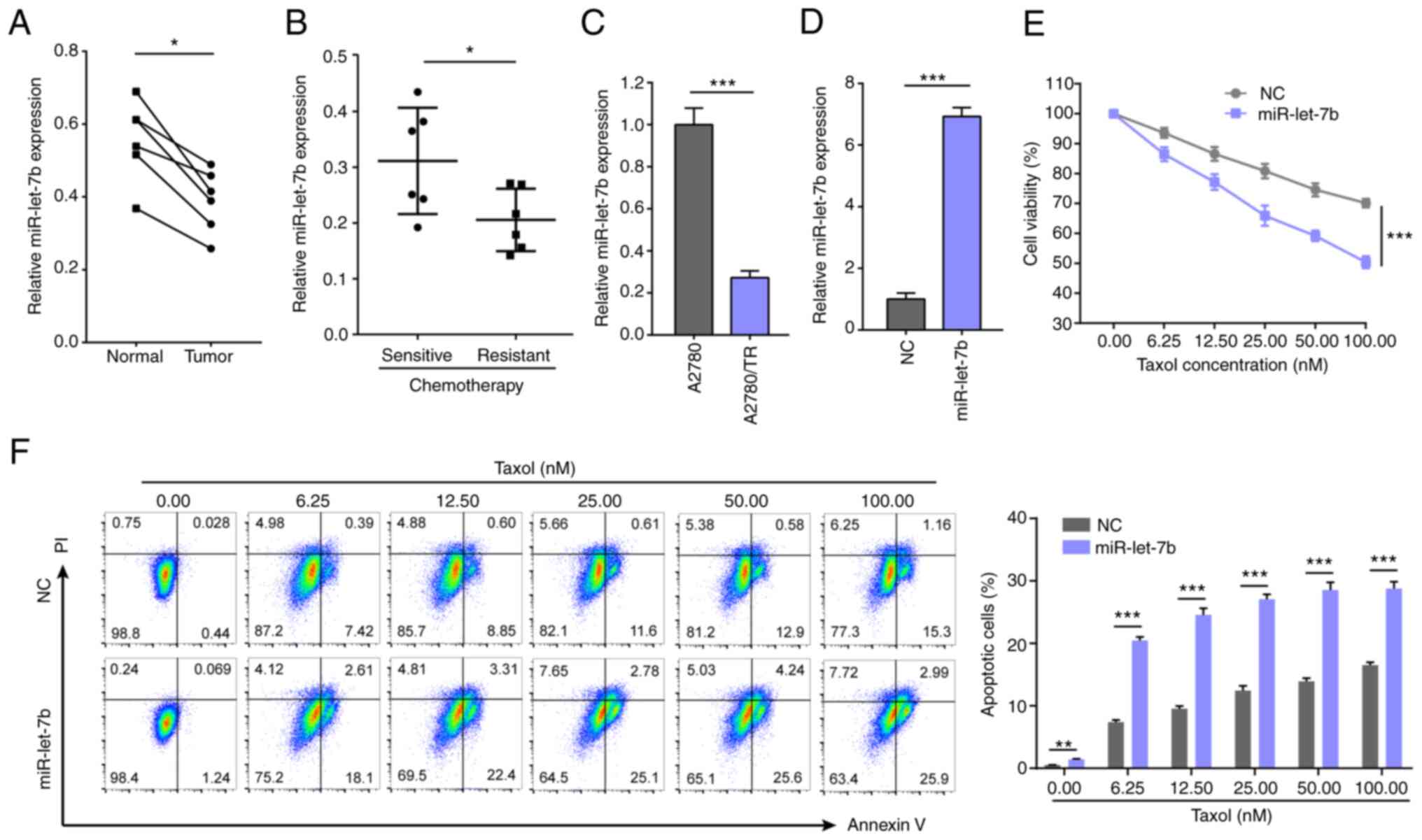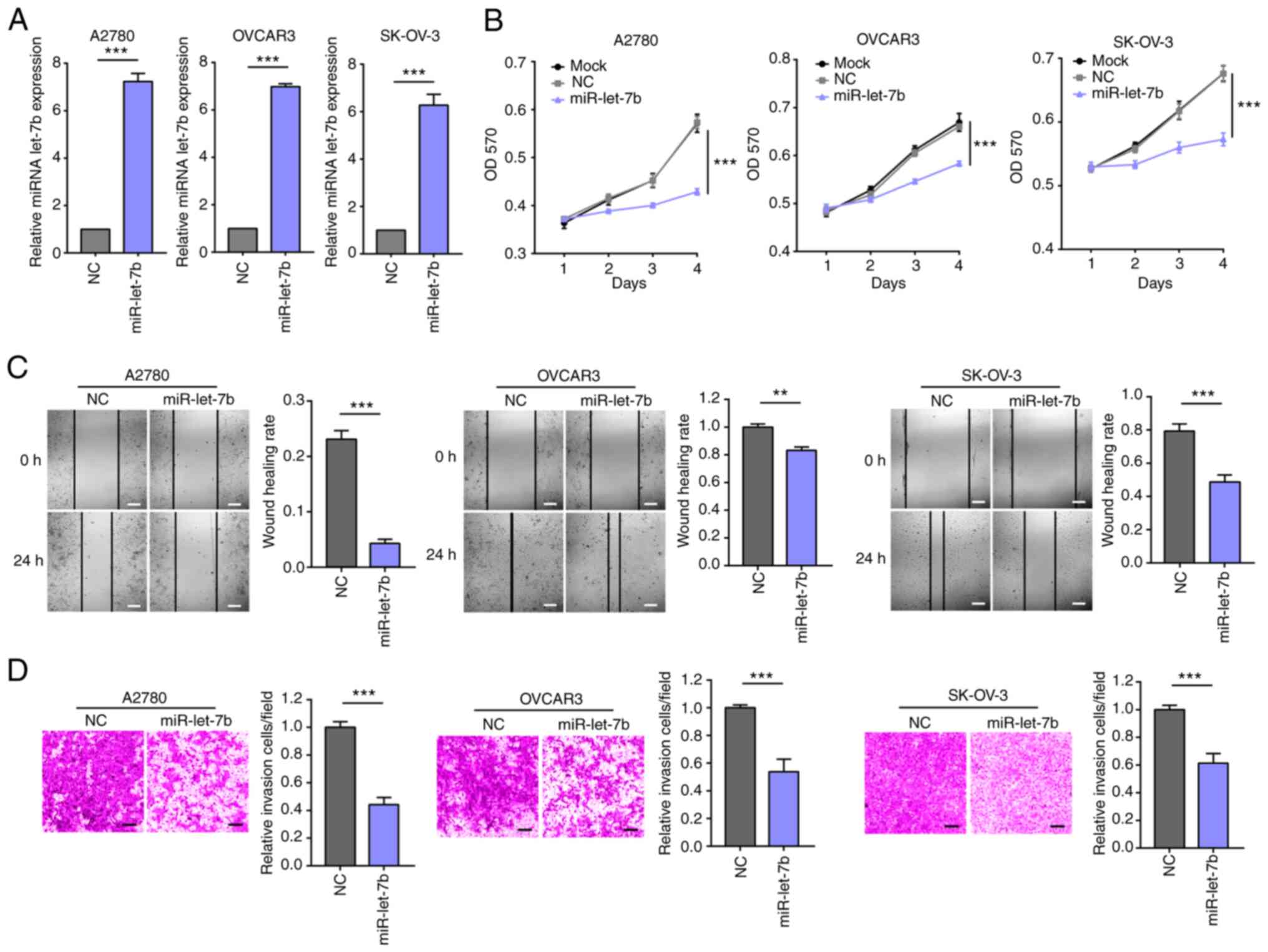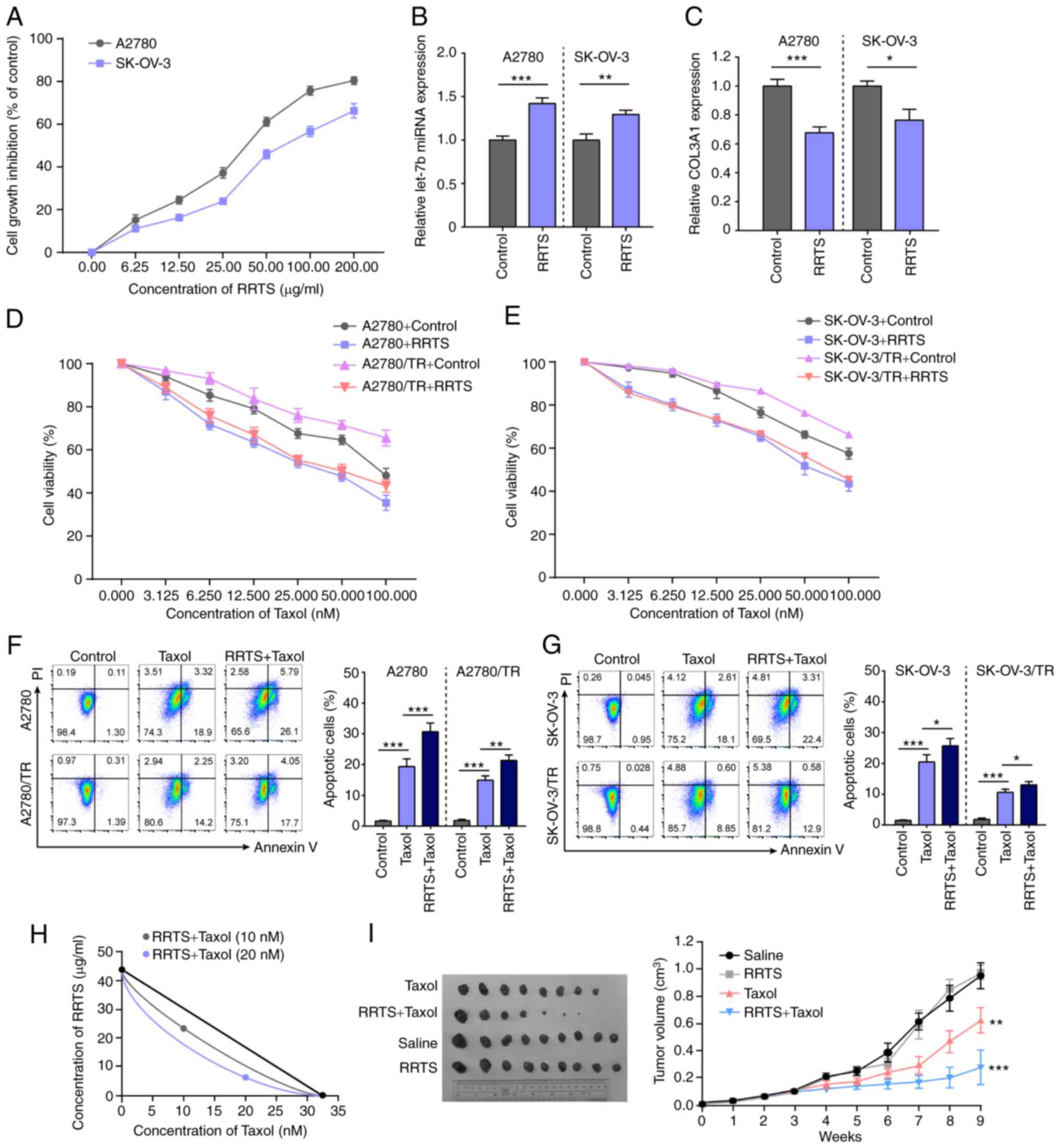|
1
|
Matulonis UA, Sood AK, Fallowfield L,
Howitt BE, Sehouli J and Karlan BY: Ovarian cancer. Nat Rev Dis
Primers. 2(16061)2016.PubMed/NCBI View Article : Google Scholar
|
|
2
|
Lheureux S, Gourley C, Vergote I and Oza
AM: Epithelial ovarian cancer. Lancet. 393:1240–1253.
2019.PubMed/NCBI View Article : Google Scholar
|
|
3
|
Gorodnova TV, Sokolenko AP, Kuligina E,
Berlev IV and Imyanitov EN: Principles of clinical management of
ovarian cancer. Chin Clin Oncol. 7(56)2018.PubMed/NCBI View Article : Google Scholar
|
|
4
|
Lee JM, Minasian L and Kohn EC: New
strategies in ovarian cancer treatment. Cancer. 125 (Suppl
24):S4623–S4629. 2019.PubMed/NCBI View Article : Google Scholar
|
|
5
|
Christie EL and Bowtell DDL: Acquired
chemotherapy resistance in ovarian cancer. Ann Oncol. 28 (Suppl
8):viii13–viii15. 2017.PubMed/NCBI View Article : Google Scholar
|
|
6
|
Freimund AE, Beach JA, Christie EL and
Bowtell DDL: Mechanisms of drug resistance in high-grade serous
ovarian cancer. Hematol Oncol Clin North Am. 32:983–996.
2018.PubMed/NCBI View Article : Google Scholar
|
|
7
|
Patch AM, Christie EL, Etemadmoghadam D,
Garsed DW, George J, Fereday S, Nones K, Cowin P, Alsop K, Bailey
P, et al: Whole-genome characterization of chemoresistant ovarian
cancer. Nature. 521:489–494. 2015.PubMed/NCBI View Article : Google Scholar
|
|
8
|
Gebert LFR and MacRae IJ: Regulation of
microRNA function in animals. Nat Rev Mol Cell Biol. 20:21–37.
2019.PubMed/NCBI View Article : Google Scholar
|
|
9
|
Dragomir MP, Knutsen E and Calin GA:
Classical and noncanonical functions of miRNAs in cancers. Trends
Genet: Oct 30, 2021 (Epub ahead of print).
|
|
10
|
Rupaimoole R and Slack FJ: MicroRNA
therapeutics: Towards a new era for the management of cancer and
other diseases. Nat Rev Drug Discov. 16:203–222. 2017.PubMed/NCBI View Article : Google Scholar
|
|
11
|
Goodall GJ and Wickramasinghe VO: RNA in
cancer. Nat Rev Cancer. 21:22–36. 2021.PubMed/NCBI View Article : Google Scholar
|
|
12
|
Peng Y and Croce CM: The role of MicroRNAs
in human cancer. Signal Transduct Target Ther.
1(15004)2016.PubMed/NCBI View Article : Google Scholar
|
|
13
|
Ayers D and Vandesompele J: Influence of
microRNAs and Long Non-Coding RNAs in Cancer Chemoresistance. Genes
(Basel). 8(95)2017.PubMed/NCBI View Article : Google Scholar
|
|
14
|
Fu TY, Chang CC, Lin CT, Lai CH, Peng SY,
Ko YJ and Tang PC: Let-7b-mediated suppression of basigin
expression and metastasis in mouse melanoma cells. Exp Cell Res.
317:445–451. 2011.PubMed/NCBI View Article : Google Scholar
|
|
15
|
Zhao Y, Deng C, Lu W, Xiao J, Ma D, Guo M,
Recker RR, Gatalica Z, Wang Z and Xiao GG: Let-7 microRNAs induce
tamoxifen sensitivity by downregulation of estrogen receptor alpha
signaling in breast cancer. Mol Med. 17:1233–1241. 2011.PubMed/NCBI View Article : Google Scholar
|
|
16
|
Xu H, Liu C, Zhang Y, Guo X, Liu Z, Luo Z,
Chang Y, Liu S, Sun Z and Wang X: Let-7b-5p regulates proliferation
and apoptosis in multiple myeloma by targeting IGF1R. Acta Biochim
Biophys Sin (Shanghai). 46:965–972. 2014.PubMed/NCBI View Article : Google Scholar
|
|
17
|
Zhang W, Zhao W, Ge C, Li X, Yang X, Xiang
Y and Sun Z: Decreased let-7b is associated with poor prognosis in
glioma. Medicine (Baltimore). 98(e15784)2019.PubMed/NCBI View Article : Google Scholar
|
|
18
|
Chen F, Chen C, Yang S, Gong W, Wang Y,
Cianflone K, Tang J and Wang DW: Let-7b inhibits human cancer
phenotype by targeting cytochrome P450 epoxygenase 2J2. PLoS One.
7(e39197)2012.PubMed/NCBI View Article : Google Scholar
|
|
19
|
China Pharmacopoeia Committee:
Pharmacopoeia of the People's Republic of China. China Chemical
Industry Press, Beijing, pp223-224, 2005.
|
|
20
|
Tian JK, Sun F and Cheng YY: Chemical
constituents from the roots of Ranunculus ternatus. J Asian Nat
Prod Res. 8:35–39. 2006.PubMed/NCBI View Article : Google Scholar
|
|
21
|
Deng KZ, Xiong Y, Zhou B, Guan YM and Luo
YM: Chemical constituents from the roots of Ranunculus ternatus and
their inhibitory effects on Mycobacterium tuberculosis. Molecules.
18:11859–11865. 2013.PubMed/NCBI View Article : Google Scholar
|
|
22
|
Li ML, Gu HM, Hang HY, Jiang YL, Jiang J,
Gu QN and WU WY: Radix ranunculus temate saponins induces apoptosis
via the death receptor and mitochondrial pathways in SGC-7901
cells. Mol Cell Toxicol. 11:449–455. 2015.
|
|
23
|
Niu L, Zhou Y, Sun B, Hu J, Kong L and
Duan S: Inhibitory effect of saponins and polysaccharides from
Radix ranunculi ternati on human gastric cancer BGC823 cells. Afr J
Tradit Complement Altern Med. 10:561–566. 2013.PubMed/NCBI View Article : Google Scholar
|
|
24
|
Livak KJ and Schmittgen TD: Analysis of
relative gene expression data using real-time quantitative PCR and
the 2(-Delta Delta C(T)) Method. Methods. 25:402–408.
2001.PubMed/NCBI View Article : Google Scholar
|
|
25
|
Di Sotto A, Irannejad H, Eufemi M,
Mancinelli R, Abete L, Mammola CL, Altieri F, Mazzanti G and Di
Giacomo S: Potentiation of Low-Dose Doxorubicin Cytotoxicity by
Affecting P-Glycoprotein through Caryophyllane Sesquiterpenes in
HepG2 Cells: An in vitro and in silico study. Int J Mol Sci.
21(633)2020.PubMed/NCBI View Article : Google Scholar
|
|
26
|
DI Giacomo S, DI Sotto A, Mazzanti G and
Wink M: Chemosensitizing properties of β-caryophyllene and
β-caryophyllene oxide in combination with doxorubicin in human
cancer cells. Anticancer Res. 37:1191–1196. 2017.PubMed/NCBI View Article : Google Scholar
|
|
27
|
Redondo A, Guerra E, Manso L,
Martin-Lorente C, Martinez-Garcia J, Perez-Fidalgo JA, Varela MQ,
Rubio MJ, Barretina-Ginesta MP and Gonzalez-Martin A: SEOM clinical
guideline in ovarian cancer (2020). Clin Transl Oncol. 23:961–968.
2021.PubMed/NCBI View Article : Google Scholar
|
|
28
|
Marth C, Reimer D and Zeimet AG:
Front-line therapy of advanced epithelial ovarian cancer: Standard
treatment. Ann Oncol. 28 (Suppl 8):viii36–viii39. 2017.PubMed/NCBI View Article : Google Scholar
|
|
29
|
Weaver BA: How Taxol/paclitaxel kills
cancer cells. Mol Biol Cell. 25:2677–2681. 2014.PubMed/NCBI View Article : Google Scholar
|
|
30
|
Pokhriyal R, Hariprasad R, Kumar L and
Hariprasad G: Chemotherapy resistance in advanced ovarian cancer
patients. Biomark Cancer. 11(1179299X19860815)2019.PubMed/NCBI View Article : Google Scholar
|
|
31
|
Kavallaris M: Microtubules and resistance
to tubulin-binding agents. Nat Rev Cancer. 10:194–204.
2010.PubMed/NCBI View Article : Google Scholar
|
|
32
|
Robey RW, Pluchino KM, Hall MD, Fojo AT,
Bates SE and Gottesman MM: Revisiting the role of ABC transporters
in multidrug-resistant cancer. Nat Rev Cancer. 18:452–464.
2018.PubMed/NCBI View Article : Google Scholar
|
|
33
|
Gillet JP, Wang J, Calcagno AM, Green LJ,
Varma S, Bunkholt Elstrand M, Trope CG, Ambudkar SV, Davidson B and
Gottesman MM: Clinical relevance of multidrug resistance gene
expression in ovarian serous carcinoma effusions. Mol Pharm.
8:2080–2088. 2011.PubMed/NCBI View Article : Google Scholar
|
|
34
|
Hayes J, Peruzzi PP and Lawler S:
MicroRNAs in cancer: Biomarkers, functions and therapy. Trends Mol
Med. 20:460–469. 2014.PubMed/NCBI View Article : Google Scholar
|
|
35
|
Lan H, Lu H, Wang X and Jin H: MicroRNAs
as potential biomarkers in cancer: Opportunities and challenges.
Biomed Res Int. 2015(125094)2015.PubMed/NCBI View Article : Google Scholar
|
|
36
|
Markou A, Liang Y and Lianidou E:
Prognostic, therapeutic and diagnostic potential of microRNAs in
non-small cell lung cancer. Clin Chem Lab Med. 49:1591–1603.
2011.PubMed/NCBI View Article : Google Scholar
|
|
37
|
Chen W, Cai F, Zhang B, Barekati Z and
Zhong XY: The level of circulating miRNA-10b and miRNA-373 in
detecting lymph node metastasis of breast cancer: Potential
biomarkers. Tumour Biol. 34:455–462. 2013.PubMed/NCBI View Article : Google Scholar
|
|
38
|
Shih KK, Qin LX, Tanner EJ, Zhou Q,
Bisogna M, Dao F, Olvera N, Viale A, Barakat RR and Levine DA: A
microRNA survival signature (MiSS) for advanced ovarian cancer.
Gynecol Oncol. 121:444–450. 2011.PubMed/NCBI View Article : Google Scholar
|
|
39
|
Chirshev E, Oberg KC, Ioffe YJ and
Unternaehrer JJ: Let-7 as biomarker, prognostic indicator, and
therapy for precision medicine in cancer. Clin Trans Med.
8(24)2019.PubMed/NCBI View Article : Google Scholar
|
|
40
|
Xu S, Xu H, Wang W, Li S, Li H, Li T,
Zhang W, Yu X and Liu L: The role of collagen in cancer: From bench
to bedside. J Transl Med. 17(309)2019.PubMed/NCBI View Article : Google Scholar
|
|
41
|
Chauhan VP, Stylianopoulos T, Boucher Y
and Jain RK: Delivery of molecular and nanoscale medicine to
tumors: Transport barriers and strategies. Annu Rev Chem Biomol
Eng. 2:281–298. 2011.PubMed/NCBI View Article : Google Scholar
|
|
42
|
Di Paolo A and Bocci G: Drug distribution
in tumors: Mechanisms, role in drug resistance, and methods for
modification. Curr Oncol Rep. 9:109–114. 2007.PubMed/NCBI View Article : Google Scholar
|
|
43
|
Ramanujan S, Pluen A, McKee TD, Brown EB,
Boucher Y and Jain RK: Diffusion and convection in collagen gels:
Implications for transport in the tumor interstitiumv. Biophys J.
83:1650–1660. 2002.PubMed/NCBI View Article : Google Scholar
|
|
44
|
Brown E, McKee T, diTomaso E, Pluen A,
Seed B, Boucher Y and Jain RK: Dynamic imaging of collagen and its
modulation in tumors in vivo using second-harmonic generation. Nat
Med. 9:796–800. 2003.PubMed/NCBI View
Article : Google Scholar
|
|
45
|
Cho A, Howell VM and Colvin EK: The
extracellular matrix in epithelial ovarian cancer-A piece of a
puzzle. Front Oncol. 5(245)2015.PubMed/NCBI View Article : Google Scholar
|
|
46
|
Januchowski R, Swierczewska M, Sterzynska
K, Wojtowicz K, Nowicki M and Zabel M: Increased expression of
several collagen genes is associated with drug resistance in
ovarian cancer cell lines. J Cancer. 7:1295–1310. 2016.PubMed/NCBI View Article : Google Scholar
|
|
47
|
Engqvist H, Parris TZ, Kovacs A, Nemes S,
Werner Rönnerman E, De Lara S, Biermann J, Sundfeldt K, Karlsson P
and Helou K: Immunohistochemical validation of COL3A1, GPR158 and
PITHD1 as prognostic biomarkers in early-stage ovarian carcinomas.
BMC Cancer. 19(928)2019.PubMed/NCBI View Article : Google Scholar
|
|
48
|
Sun Q, Zhao H, Zhang C, Hu T, Wu J, Lin X,
Luo D, Wang C, Meng L, Xi L, et al: Gene co-expression network
reveals shared modules predictive of stage and grade in serous
ovarian cancers. Oncotarget. 8:42983–42996. 2017.PubMed/NCBI View Article : Google Scholar
|
|
49
|
Wang Q, She Y, Bi X, Zhao B, Ruan X and
Tan Y: Dexmedetomidine protects PC12 cells from lidocaine-induced
cytotoxicity through downregulation of COL3A1 mediated by
miR-let-7b. DNA Cell Biol. 36:518–528. 2017.PubMed/NCBI View Article : Google Scholar
|
|
50
|
Yu DH, Ruan XL, Huang JY, Liu XP, Ma HL,
Chen C, Hu WD and Li S: Analysis of the interaction network of Hub
miRNAs-Hub genes, being involved in idiopathic pulmonary fibers and
its emerging role in non-small cell lung cancer. Front Genet.
11(302)2020.PubMed/NCBI View Article : Google Scholar
|
|
51
|
Liu J, Luo C, Yin Z, Li P, Wang S, Chen J,
He Q and Zhou J: Downregulation of let-7b promotes COL1A1 and
COL1A2 expression in dermis and skin fibroblasts during heat wound
repair. Mol Med Rep. 13:2683–2688. 2016.PubMed/NCBI View Article : Google Scholar
|


















